Perhaps rarely meet such a person who does not know how these beautiful and delicate flowers are called. The people often say: "Pansies blooms" and invite relatives and friends to admire this beauty. Names from a gentle and unusual flower a lot: someone calls him "Viola", someone "moths", "field brothers", "brother and sister". It is impossible to list all the names of this type of violet, but the right will be the cathedral. The colors and hybrids of this flower can be found a lot, there is even black flowers in nature with bright splashes. If you have become fans of these amazing colors, then you want to grow violets yourself. To do this, it is necessary to put it right and care. The flower is unpretentious and very soon will delight you with its unusual blossoms.
What do we know from history
A lot of interesting stories are horty around the chilli. For example, in France, this flower is considered a symbol of death, and in Germany it is associated with an angry stepmother. The most interesting legend about the appearance of beautiful flowers in Slavs - a girl out of a poor family named Annie loved the rich guy. Together they were short. Practically before the wedding itself, the guy has changed his mind to marry. Anyuta cried a lot and, without handing out the separation, died. After the funeral, after some time the flowers of unusual beauty bloomed on her grave. They were also called them in the people - "Pansy's eyes." Despite all the sad legends, around the world, people grow violets at home and admire their beauty.
Varieties of viok
Before proceeding to study the foundation of the cultivation of violets, we will get acquainted with the popular varieties of Horca:
- Viola Tricolor, the common name "Pansies". The violet tricolor, achieves no more than 20 cm in growth, grows in the wild. A distinctive feature of this variety of violet is that it will bloom the whole season, pleaseing us with an unusual tricolor coloring petals - bright yellow, bright blue and purple shade.
- Viol Wittroka is a garden plant, reaches a height of up to 40 or more centimeters. Coloring flowers can be very different and affected by the riot of paints. The people are believed that if you managed to meet a black violet, then the person will be rich.
- "Horned Viol" is an unusual plant with purple or purple flowers. During flowering, a thick carpet is formed. It is characterized by the duration of flowering - from the beginning of spring and almost to the first frosts.
- "Viola Altai" is a beautiful-flowing plant, and will delight bloom twice per season.
- "Viola dehumy" is a favorite flower of beekeepers, because during the flowering period attracts bees with its unusual aroma. This type of violet is used in the perfume industry and for the manufacture of essential oils.
- "Viola Sororia" is characterized in that it blooms one of the first. Already in May you can admire beautiful flowerflowers. By the way, this variety of violets is also in honor of the beekeepers, as it is characterized by a good self-sowing.
- "Yellow Viol" is an unpretentious plant, grows in any conditions. This flower will be able to grow even a novice gardener on his homeland. During flowering, it blooms bright yellow lemon color.
Photo of violet horned:
Self-cultivation of violets
To enjoy the beautiful blossom of a horned chimney, it is necessary to provide her good conditions and proper care.
Consider some features of cultivation of violets at home:
- The violet is a very gentle flower, so it will feel good on the illuminated place (only not under the scorching sunshine). Humidity in the place of cultivation of violet should be moderate. If you have gathered to grow these extraordinary flowers on the balcony, located north, then they will be comfortable there, but expecting abundant flowering should not be due to insufficient illumination.
- Special attention is the soil - it must be drained, since the plant does not tolerate water stagnation. If such a problem arises, the roots will begin to deteriorate the first.
- If there are no rains for a long time, then you need to water the violet, otherwise the flowering can not be waited.
- In the care of the viola, it is not only watering - the fertilizer can be made, but only mineral. Organic additives violet does not tolerate. It is strictly forbidden to "feed" the plant with fresh manure.
- If you saw that the violet began to hurt, most likely, pests began in the root system. It is necessary to make plant trees with a special drug.
- Want long flowering? Then you need to monitor each flower, only one will begin to fond and push it - it needs to be removed immediately.
- Do not miss the collection of seeds: as soon as the boxes begin to turn yellow, it's time to collect them. If you did not have time - the seeds will absorb fertile soil. In this case, the next year it is possible to wait for the growth of new plants.
What kind of soil loves violet?
To obtain good flowering, it is necessary to prepare the right soil - it can be a loamy, with feeders. It must be remembered that the soil should be constantly moistened, but not wet. The plant does not tolerate the water, the lack of sunlight and the introduction of fresh manure. These 3 gold rules must be learned.
Also for violet is also suitable for the substrate consisting of humus (only mature) and sublinous soil. Before boarding, the soil must be well drained and thoroughly explode. Do not need to do. Superphosphates or ammonium nitra are suitable as a fertilizer.
Interesting moment of cultivation of violet in peat pills. Peat is ideal for growing plants from seeds, since he does not delay moisture for a long time, retains heat and nourishes flowers with useful substances. If you sow seeds in peat pills, you can expect a good strong seedlings.
Reproduction of violet
The violet horned with 2 ways is breeding:
- Stalling.
- Seeds.
Consider both options.
Planting plants with cuttings
This method of breeding violets is very important if it is necessary to withdraw the valuable grade of the plant so that it is not mixed with each other. The reproduction of cuttings will help to rejuvenate the plant, since after several years the violet begins to grow. The flowering will continue, but the flowers will become much smaller. Another plus of purifying violets by shifting is the possibility of collecting a large amount of material for the season. For example, if 1 flower gives up to 40 or more cuttings, then in the future you will have as many violets!
It is possible to start the shilling plants in the warm season. Optimal time - from late May until the end of July.
To make everything right, learn these recommendations:
- choose a good place. For the landing in the ground, a plot under the tree is suitable - there will be a sufficient amount of moisture and good shelter from direct sunlight;
- after choosing a place, it is necessary to prepare a plot: to dwell the earth and polish abundantly;
- now the most interesting thing: in front of you an adult plant. You must select cuttings and cut them carefully. You only need to take those shoots that were formed at the top, with 2 or 3 knots and only green;
- the resulting cuttings need to land in the ground (or in the seedlings box), deepening no more than 1.5 cm;
- the cuttings planted very tightly, so much so that the adjacent leaves come into contact with each other;
- so that the seedlings are faster and not covered, they are covered with paper or finely moistened tissue;
- during the 2nd subsequent weeks, care will be simple: watering plants every day and weeding from weed grass.
A month later, the first works will be noticeable - cuttings should be well rooted. You can get the flowering of new plants in the same season if you perform the shilling in May or not later than June. Later, the shilling will delight you with lush flowering in the spring of next year. It will be much more sufficient than early shilling.
Cultivation of violet horned seeds
It is as simple to grow a violet from seeds as simply, as well as propagate it by shifting. The only moment - blooms will have to wait a bit longer, but the seedlings grown in this way will be stronger and more resistant to diseases.
Breeders advise to grow a margin from seeds in special peat pills. Peat - the perfect material for seedlings, retains optimal humidity and has all the necessary nutrients for good seed growth.
How to grow a violet in a peat tablet:
- Depending on the number of plants, prepare as much peat tablets.
- Lower the tablets into a container with warm water. Wait until they start swell.
- Take the seeds and put on top into the recess. Cover each seed with a small amount of land (if the seed landing is performed in open ground). At home, the tablets are placed in a spacious container or separate cups, top with a polyethylene film or glass, to create a greenhouse effect.
Walled white violet, grown of seeds:
The standard method of planting seeds of violets is carried out according to such a scheme:
- Seeds need to begin to harvest at the end of the summer, and put them in January or February.
- How to collect seeds: After the plant is blocked, small boxes are formed on the place of flowers. As the seeds are ripening, they will start drying. Hurry up not to miss the moment of opening boxes, otherwise all seeds will be on Earth. Naturally, it is not worth spending a day in anticipation of such a miracle, a faithful sign of ripening seed will be a change in the position of the seed box - it will turn up.
- After collecting boxes, the seeds are removed, cleaned and dried. Store in the refrigerator.
- Timing seed landing may differ. It depends on the time of flowering and varieties of the plant. For example, if you want the violets blooming already in May, then the seeds need to be buried no later than February.
- For growing many years of horned violets, the seeds need to be dried immediately after the collection, that is, in August in advance prepared beds.
- The grains are sulfied into the soil, after planting moisturizes it from the sprayer.
- From above, the seeds sprinkle peat, sand or light soil.
- When the first 3 leaves appear, plants need to dive.
- It is important not to miss the moment of disagreeing the shoots, otherwise they can stretch up and drop.
- Distance Piking - 20x20 cm.
- You can land seeds into a box for growing seedlings or immediately into individual pots, so that in the summer period to put them on the balcony or translating into the flower bed.
- At the end of summer, young violets can be transferred to a permanent place and the next year in the spring to expect beautiful flowering.
How to plant violets
In the open ground, seedlings can be planted at the end of April. When planting violets, you need to consider the following: if you arrange seedlings at a distance of 15-20 cm from each other, then the flowers will be bright and large, and if you arrange a close neighborhood, then you can expect cross-pollination and multi-colored carpet when flowering.
The seedling landing is not significantly different - the violet is planted in the prepared grooves, the earth is emphasized from above. Watering - through the sprayer.
It is necessary to care for plants every day - to water in a timely manner (if there is no dry and soil dry, then every day), make feeding and pour weeds. For the winter, the viper can be covered with a sweetheart or sawdust.
Common diseases of horned violet: "Black leg", "gray rot". You can avoid the disease and death of plants only by providing timely care - violets are sprayed with a solution of soap with soda or simply sprinkled with chopped gray.
How to water violets
Flowers watered moderately, increasing the frequency only in dry time. The violet loves spraying in the morning and evening hours. If the summer is not roast, with a sufficient amount of rain, then an additional watering plant will not need. Only sometimes, the soil code will become dry, it is necessary to pour violet carefully from the watering can, paying attention more than the soil, and for the upper part of the plant, just a spraying in the morning. The violet is irrigated from the sprayer, and your garden will be filled with an amazing flavor of these unusual and beautiful flowers.
Try to grow beauty on your summer cottage - the violet will give you only a good mood!

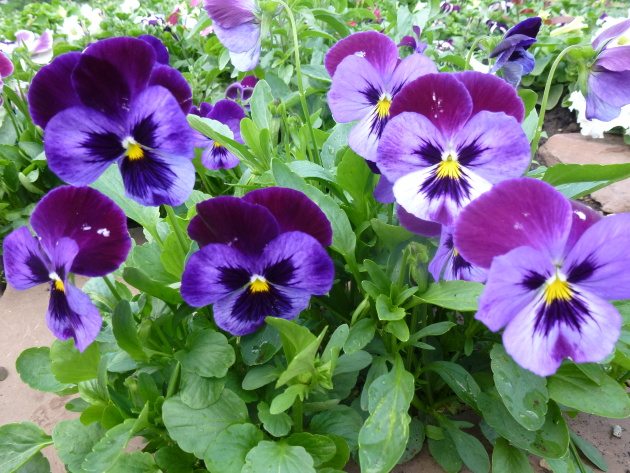
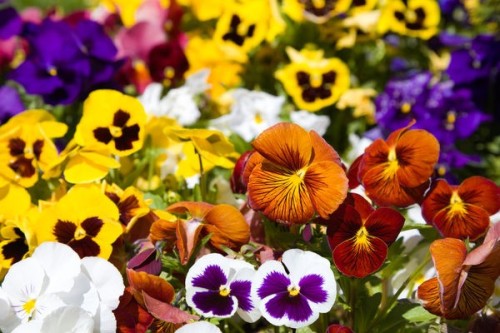
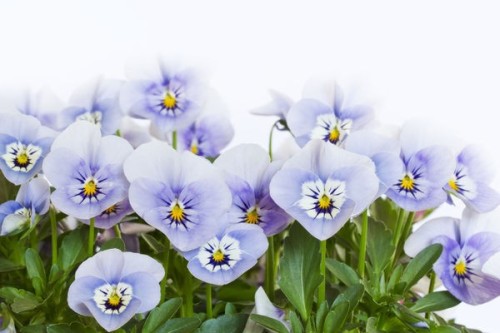
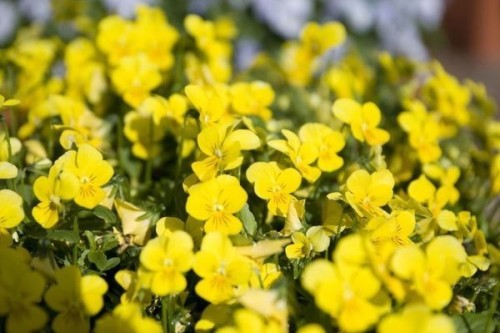
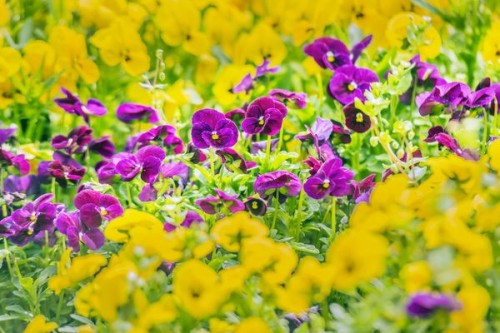
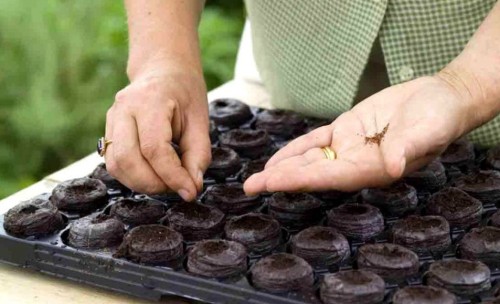
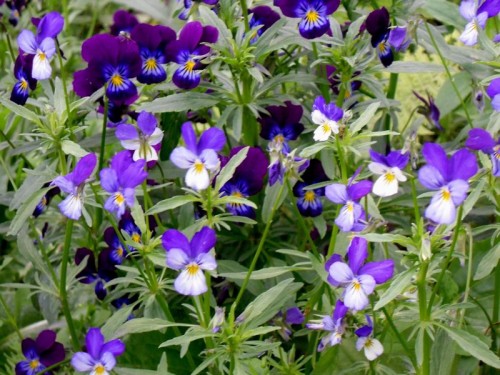
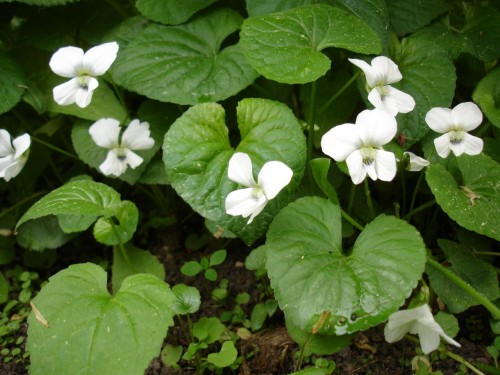

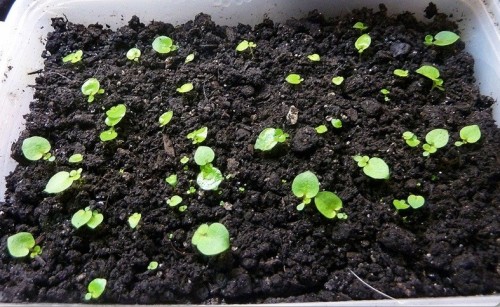












 Start a discussion ...
Start a discussion ...